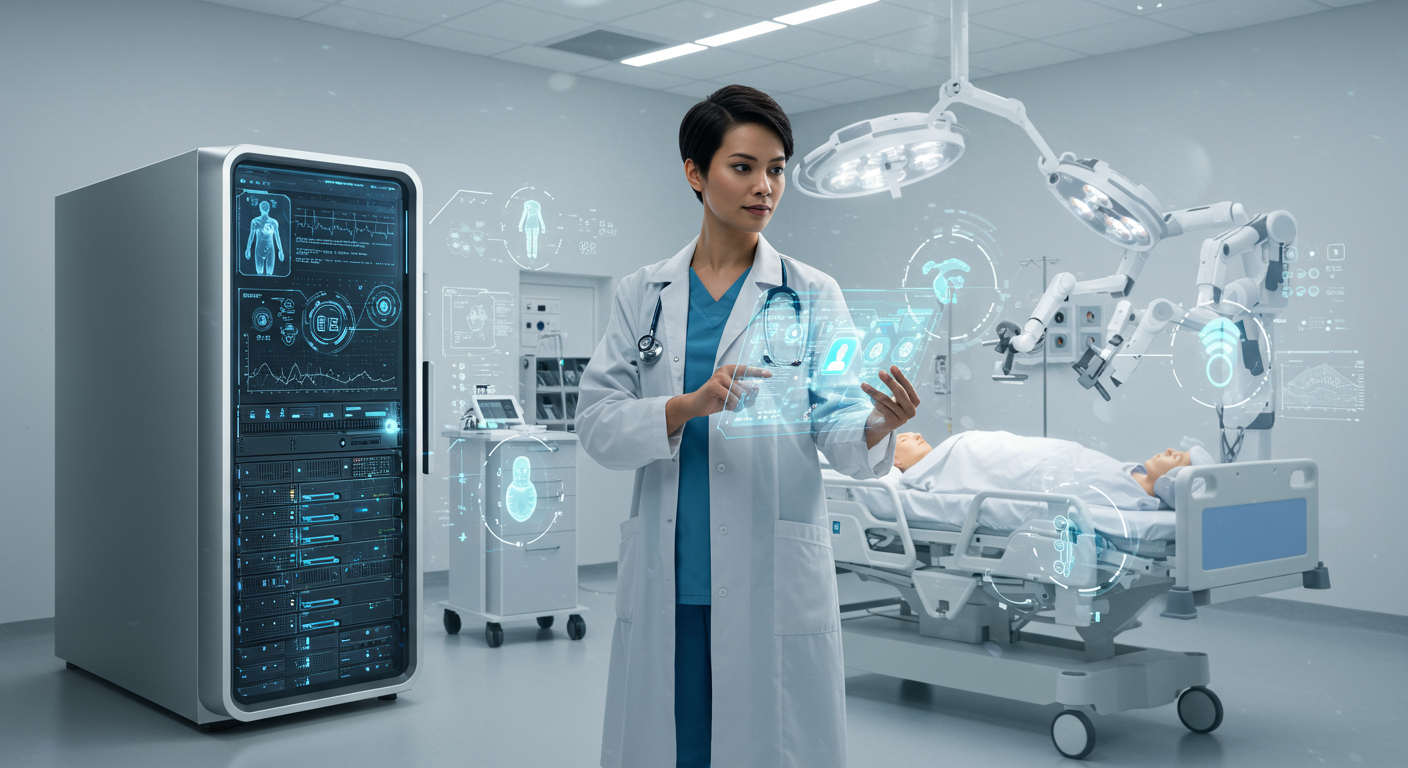The healthcare industry is undergoing a significant transformation, driven by the relentless pursuit of better patient outcomes, operational efficiency, and personalized medicine. Edge computing is emerging as a pivotal technology in this revolution, bringing computational power closer to where data is generated and decisions are made – a critical factor in time-sensitive medical scenarios. This article delves into the profound impact of edge computing on healthcare, exploring its applications, benefits, and the challenges that need to be navigated.
What is Edge Computing in the Healthcare Context?
In healthcare, edge computing refers to the deployment of computing infrastructure and applications closer to the sources of data. These sources can include patient monitoring devices, medical imaging equipment, wearables, and various sensors within a hospital or even in a patient's home. Instead of sending vast amounts of sensitive data to centralized cloud servers for processing, edge devices perform initial processing and analysis locally. This proximity reduces latency, conserves bandwidth, and can enhance data security and privacy.
Key Applications of Edge Computing in Healthcare
- Remote Patient Monitoring (RPM): Wearable devices and home-based sensors collect continuous physiological data (heart rate, glucose levels, oxygen saturation). Edge computing allows for real-time analysis of this data, enabling alerts for critical changes and facilitating timely interventions without overwhelming network resources. This is especially vital for managing chronic diseases and post-operative care.
- Smart Hospitals and Asset Tracking: Edge nodes can process data from IoT sensors to optimize hospital workflows, track medical equipment, manage environmental controls, and even monitor staff and patient movements for safety and efficiency. For example, ensuring that critical equipment is always available and easily locatable.
- AI-Powered Diagnostics and Medical Imaging: Edge devices equipped with AI algorithms can pre-process and analyze medical images (like X-rays, CT scans, and MRIs) locally. This speeds up the diagnostic process, assists radiologists by highlighting potential anomalies, and can be crucial in areas with limited access to specialized medical professionals. GE Healthcare is exploring such applications.
- Robotic Surgery and Telesurgery: Edge computing provides the ultra-low latency required for robotic-assisted surgeries, where a surgeon might be remotely controlling robotic arms. Instantaneous feedback and control are paramount for patient safety and surgical precision.
- Ambulance and Emergency Services: Equipping ambulances with edge computing capabilities allows paramedics to transmit vital patient data and even video feeds to the hospital in real-time. This enables emergency room staff to prepare for the patient's arrival and provide guidance en route, significantly improving a patient's chances in critical situations.
Benefits of Edge Computing in Healthcare
- Reduced Latency for Critical Decisions: In healthcare, milliseconds can make a difference. Edge computing provides the rapid processing needed for real-time alerts and interventions, such as detecting a fall in an elderly patient or identifying a critical change in a patient's vitals.
- Enhanced Data Security and Privacy: Processing sensitive patient data locally reduces the attack surface compared to transmitting everything to the cloud. This can help healthcare providers meet stringent regulatory requirements like HIPAA (Health Insurance Portability and Accountability Act) by keeping data within a controlled environment.
- Improved Reliability and Offline Access: Edge systems can continue to operate even if the connection to the central cloud is temporarily lost. This is crucial for critical care applications where continuous operation is non-negotiable.
- Cost Savings: By processing data locally, organizations can reduce the amount of data transmitted to the cloud, leading to lower bandwidth costs and reduced cloud storage and processing fees.
Challenges and Considerations
Despite its immense potential, the adoption of edge computing in healthcare comes with its own set of challenges:
- Integration with Existing Systems: Healthcare IT environments are often complex, with a mix of legacy and modern systems. Integrating edge solutions seamlessly requires careful planning and standardization.
- Data Management and Standardization: Managing data across numerous distributed edge devices, ensuring interoperability and maintaining data integrity, can be complex.
- Security in a Distributed Environment: While edge can enhance security in some ways, securing a distributed network of edge devices itself presents new challenges that must be addressed proactively.
- Regulatory Compliance: Adherence to healthcare regulations like HIPAA is paramount. Edge architectures must be designed with compliance at their core. More information on HIPAA can be found on the U.S. Department of Health & Human Services website.
The Future of Edge in Healthcare
The future of edge computing in healthcare is incredibly promising. As AI and machine learning models become more sophisticated, their deployment at the edge will unlock even more powerful applications, from predictive diagnostics to personalized treatment plans delivered in real-time. The synergy between 5G technology and edge computing will further enhance capabilities, enabling more robust and responsive healthcare solutions, especially in remote and underserved areas.
Conclusion
Edge computing is not just a technological trend; it is a fundamental shift in how healthcare data is processed and utilized. By bringing intelligence closer to the patient and the point of care, edge computing is paving the way for a more responsive, efficient, secure, and patient-centric healthcare system. While challenges remain, the transformative potential of edge computing to revolutionize patient care and outcomes is undeniable.
